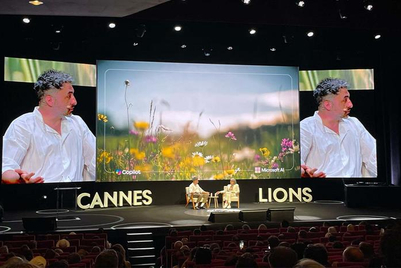
TOKYO - Expedia recently made itself part of the Pokémon Go phenomenon by flying Nick Johnson—the first player to catch all Pokemon characters—to Japan as the final stop on a victory tour that included Paris, Hong Kong and Sydney. The company’s sponsorship of Johnson was a global initiative and something that Natsuko Kimura, Expedia’s marketing director in Japan, says would have been impossible if the company were Japanese.
At the same time, Expedia has recognised the importance of localising to be more than just another global brand in terms of its marketing. That is especially true now as it looks to find favour among a wider group. Most of its customers are experienced travellers in their 30s and 40s, but it is looking to appeal to more casual and younger users.
Expedia has been in Japan nearly 10 years, and much of its focus during that time has been on performance marketing. Kimura says concentrating on the digital platform has served the brand well up to a point, and it has built up a good user base among more internationally-minded, tech-oriented travellers. But Kimura admits that the majority of people, at least in Expedia’s early years in the market, saw it as “a strange international brand” that wasn’t to be trusted.
No TV, no brand
It has made progress on the trust front, but still has further to go in terms of building awareness and understanding. A big part of its growth has been down to TV. In the US, investing in TV as a tech brand seems decidedly counter-intuitive. Not so in Japan, where the likes of Google also invest a significant amount in traditional media advertising. Kimura does not believe a digital-only approach can work for any company that is serious about building its brand in the country.
“We came to the decision that if you want to build a brand and go big in Japan, you have to first get the customer’s trust,” Kimura explains. “It’s not an easy job. You really need to get across the sense of being a major company. People still think big companies are trustable. Talking about being big on digital media is not enough. But if you’re able to spend money on a TV commercial, people assume you are big enough. That is what helped us go to the next stage in terms of building the brand.”
As Expedia steps up its efforts to draw in the mass market, despite trying to win over younger consumers, it sees value in putting more money into TV, as well as increasing digital spend. Kimura does not disclose the marketing budget, but says it’s a case of experimentation to strike the optimum balance between the two. During peak seasons, TV tends to take precedence, while in off-seasons, up to 80 percent of the budget can be allocated to online media.
Just as important as being present on TV has been making sure that presence is localised, Kimura says. This is where Exbear, Expedia’s Japan-only bear mascot, comes in. The character entered the picture in 2010. To outside observers, it might look somewhat random. But Kimura explains that it was necessary to make the brand relatable to people, especially since the name Expedia holds no meaning or association for Japanese people. At that time, mascots were not as ubiquitous as they are now and consisted primarily of SoftBank’s ‘Otosan’ dog and the Aflac Duck. Getting the bear accepted was a strategic operation in itself.
Knowing that a fuzzy character was not in line with Expedia’s global positioning, Kimura expected resistance from the brand team at headquarters. So she secured approval from Expedia’s president before even suggesting it to her marketing colleagues. The Aflac Duck played an important role: Kimura pointed out that instead of being aggressive as it was in the US, in Japan it had been adapted to be “cute and soft”, highlighting the need to adjust to local sensitivities. She went on to explain that the bear was necessary to attract more casual customers, which the president accepted.
“Showing the Aflac example managed to convince him,” she says. “[People in the US] don’t know about Japan, so it’s important to showcase other foreign companies. This helped to make the right decision.”
Mascot activation
Of course, with Japan now saturated with animal mascots, it needs to be employed imaginatively in order to get through to the average consumer. Kimura says Expedia is more active in using online for brand building purposes and engagement. She is realistic that people are unlikely to pay much attention to, let alone share, something that resembles a TV commercial online—“unless it’s extremely funny or interesting, which is rare”.
Expedia’s online activities tend to involve a challenge or competitive element, for example hiding the mascot in online videos and offering a prize for finding it. With traditional travel operators still strong, a priority for Expedia is to reach people as they research those sites for travel information. The key is to get them to search the Expedia site and get a feel for how it works, even if there is no immediate transaction, Kimura says. She says one method Expedia has tried has been to offer quizzes that test people’s understanding of the site and offer prizes.
“We are focused on shoppers. We just have to get them to try it, and understand the prices are not gimmicks. Then even if they’re not booking at this time, they come back,” she claims.
The company is also open to collaborations with brands of varying scale and background. Recent tie-ups involved Nestlé, Gap and even Omron, which had developed a sleep aid. Expedia offered coupons and trip incentives for consumers of the product, while creative work for Omron incorporated the mascot, which helped drive click-through on its banners. This sort of initiative is likely to become more common. “Working with local brands can help us reach new segments,” Kimura says.


.jpg&h=334&w=500&q=100&v=20250320&c=1)


.png&h=334&w=500&q=100&v=20250320&c=1)




.png&h=334&w=500&q=100&v=20250320&c=1)




.png&h=268&w=401&q=100&v=20250320&c=1)
.png&h=268&w=401&q=100&v=20250320&c=1)
.png&h=268&w=401&q=100&v=20250320&c=1)

